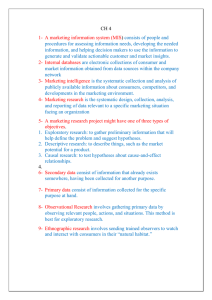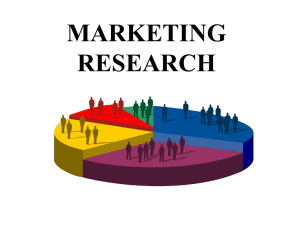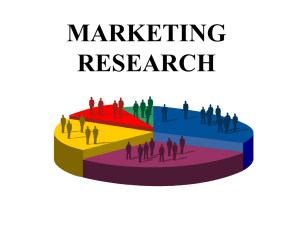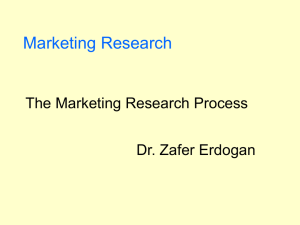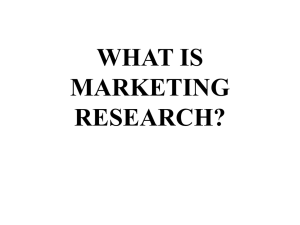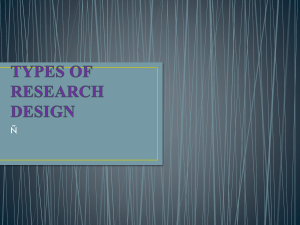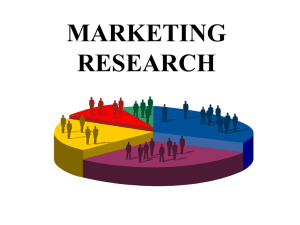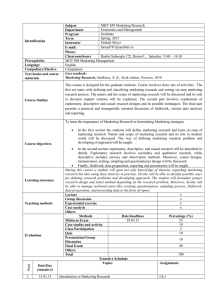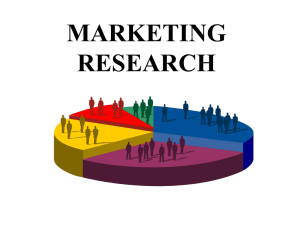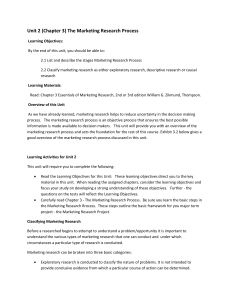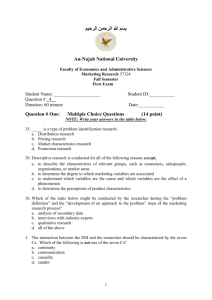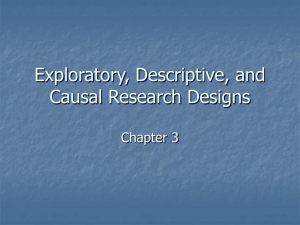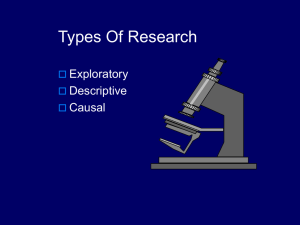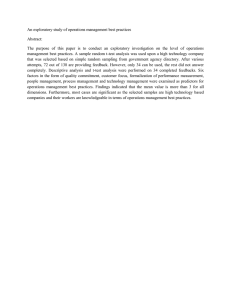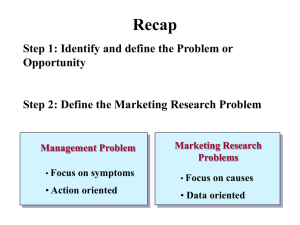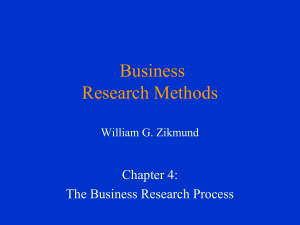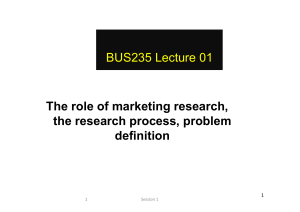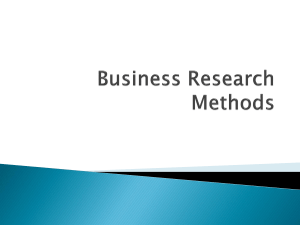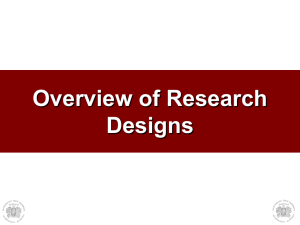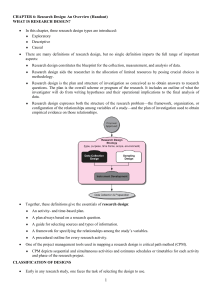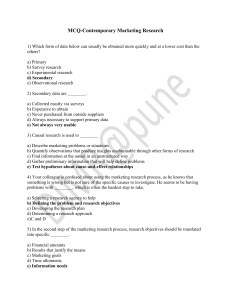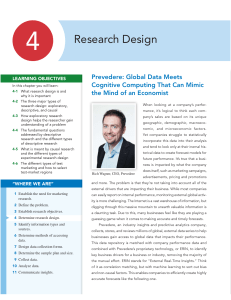University of Lethbridge Faculty of Management Management 3220Y
advertisement
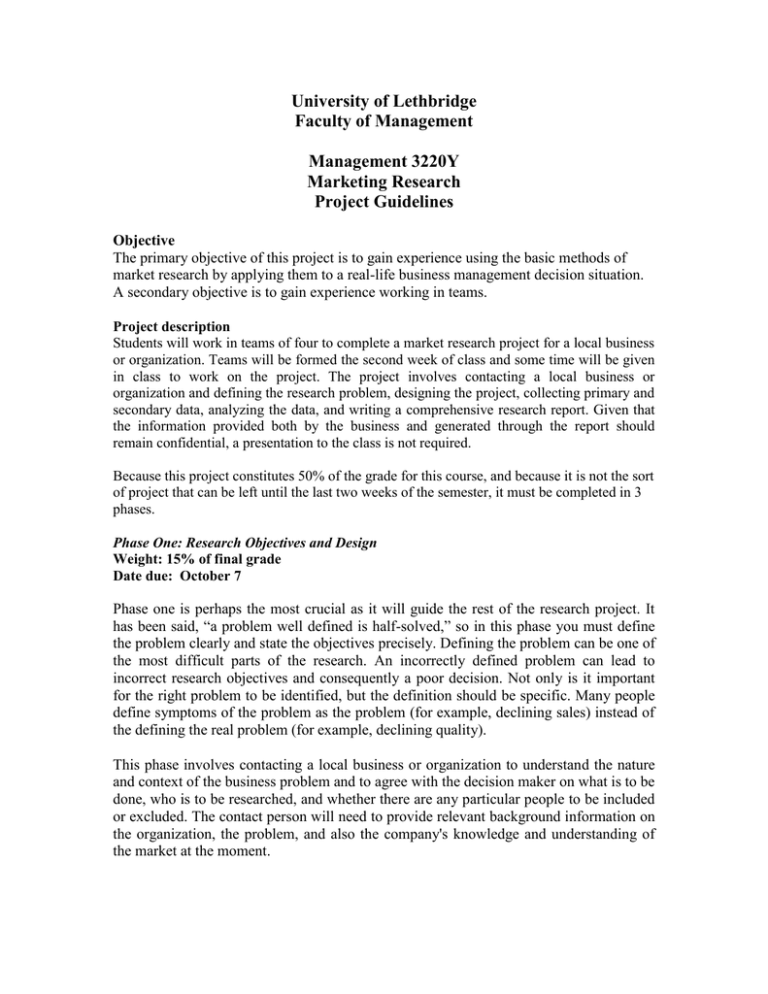
University of Lethbridge Faculty of Management Management 3220Y Marketing Research Project Guidelines Objective The primary objective of this project is to gain experience using the basic methods of market research by applying them to a real-life business management decision situation. A secondary objective is to gain experience working in teams. Project description Students will work in teams of four to complete a market research project for a local business or organization. Teams will be formed the second week of class and some time will be given in class to work on the project. The project involves contacting a local business or organization and defining the research problem, designing the project, collecting primary and secondary data, analyzing the data, and writing a comprehensive research report. Given that the information provided both by the business and generated through the report should remain confidential, a presentation to the class is not required. Because this project constitutes 50% of the grade for this course, and because it is not the sort of project that can be left until the last two weeks of the semester, it must be completed in 3 phases. Phase One: Research Objectives and Design Weight: 15% of final grade Date due: October 7 Phase one is perhaps the most crucial as it will guide the rest of the research project. It has been said, “a problem well defined is half-solved,” so in this phase you must define the problem clearly and state the objectives precisely. Defining the problem can be one of the most difficult parts of the research. An incorrectly defined problem can lead to incorrect research objectives and consequently a poor decision. Not only is it important for the right problem to be identified, but the definition should be specific. Many people define symptoms of the problem as the problem (for example, declining sales) instead of the defining the real problem (for example, declining quality). This phase involves contacting a local business or organization to understand the nature and context of the business problem and to agree with the decision maker on what is to be done, who is to be researched, and whether there are any particular people to be included or excluded. The contact person will need to provide relevant background information on the organization, the problem, and also the company's knowledge and understanding of the market at the moment. In this phase you must also specify the information needed to solve the problem and the methods and procedures for acquiring that information, i.e. the research design. Research designs may be identified as exploratory, descriptive and causal. Exploratory research is used to gain ideas and insights to further define the problem and suggest hypotheses. It is particularly helpful in breaking broad, vague problem statements into smaller, more precise problem statements. Typically, it involves colleting secondary data, interviewing experts, pilot surveys, and qualitative research such as focus groups, interviews and observation. Descriptive research, in contrast, is concerned with describing the characteristics of certain groups, to estimate the proportion of people who behave in a certain way, or to make predictions. Usually conducted after exploratory research it is marked by well-formulated hypotheses, and usually involves a pre-planned structured design and the collection of data through surveys. Descriptive information is often useful for predictive purposes, but the causes (reasons why) of what is being predicted improves understanding. Causal research tests relationships of causal factors to the effects predicted. “Does X cause Y?” For example, does a lower price cause an increase in sales? Exploratory research often involves experiments, and is not a requirement for this project. Completion of phase One involves writing a short (maximum 7 pages) research proposal. This should provide some background on the organization, the management decision it faces, a statement of research objectives giving a clear idea of the single overall objective, a review of relevant literature, a discussion of what you propose to do, and the information needed to solve the problem. A time line with deadlines lines for both the proposal and delivery of the results is also needed. Phase Two: Data Collection Weight: 10% of final grade Date Due: November 18th Phase two involves developing a survey questionnaire and sampling plan. This section should explain the sample, instruments, and procedures used and the data collected. This section should be 5-7 pages long. It must also include a revision of the phase one proposal based on feedback received and any changes in the plan that may have occurred. Phase Three: Analysis and Report Weight: 25% of final grade Date Due: December 4th. The data must then be collected, processed, analyzed, and interpreted. Phase three is a comprehensive report based on the sum of the research and analysis. This section should be 10-15 pages long. The total project should not exceed 30 pages double-spaced, excluding any appendices (e.g. copies of questionnaires used, computer output etc.). Again, it must include revisions based on feedback of phases one and two (don’t forget to change the future tense to the past tense). The Report Instead of just summarizing the results, wherever appropriate conclusions should be drawn and recommendations that management can act upon should be made. The report for management should emphasize the strategic aspects of the research project rather than the operating details. The company needs to sign-off on the final report, which should take the following format: Table of Contents Executive Summary Define the Problem concisely Describe approach briefly Major findings Conclusions Recommendations Problem definition Background to the problem Secondary data summarized Statement of the problem Approach to the problem Broad approach taken to the problem Theoretical foundations Analytical models Research questions and hypotheses Research design Information needs Details of how the research was conducted Data collection from secondary sources Data collection from primary sources Scaling techniques Questionnaire development and pre-testing Sampling techniques Data analysis Methods used Results Presented at aggregate level Also at market segment, geographic level etc. Geared to problem And to information needs Presented in tables and graphs Main findings discussed in text Limitations and Caveats Due to time, budget etc. Limitations due to error types (e.g. sampling non-sampling) How far can results be taken Conclusions and Recommendations In light of problem being addressed Based on the results and conclusions the researcher may make recommendations to the decision makers. Exhibits/Appendices Questionnaires Statistical output Tips and Expectations Businesses or organizations that work best for this project tend to be small business-to-consumer enterprises rather than those involved in business to business. It is easier too if the target market is well defined and readily accessible. You (as well as the instructor) might be asked to sign a non-disclosure. You might be asked to give a presentation to the company or organization. The decision maker should expect to meet with you at least three times. The first time will be to explore and understand the management decision that needs to be made. The second time will be to discuss your plan of action, and third time to present the report.
